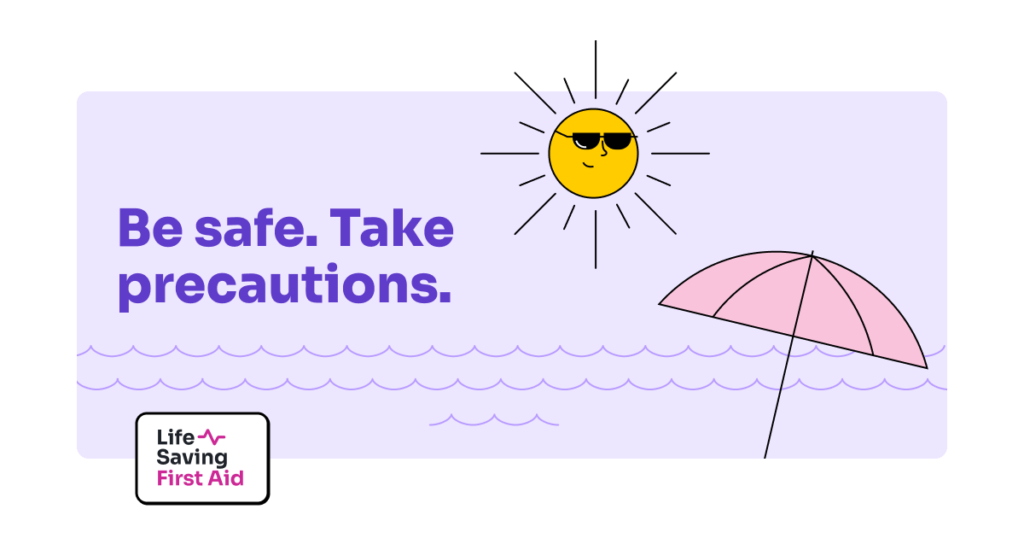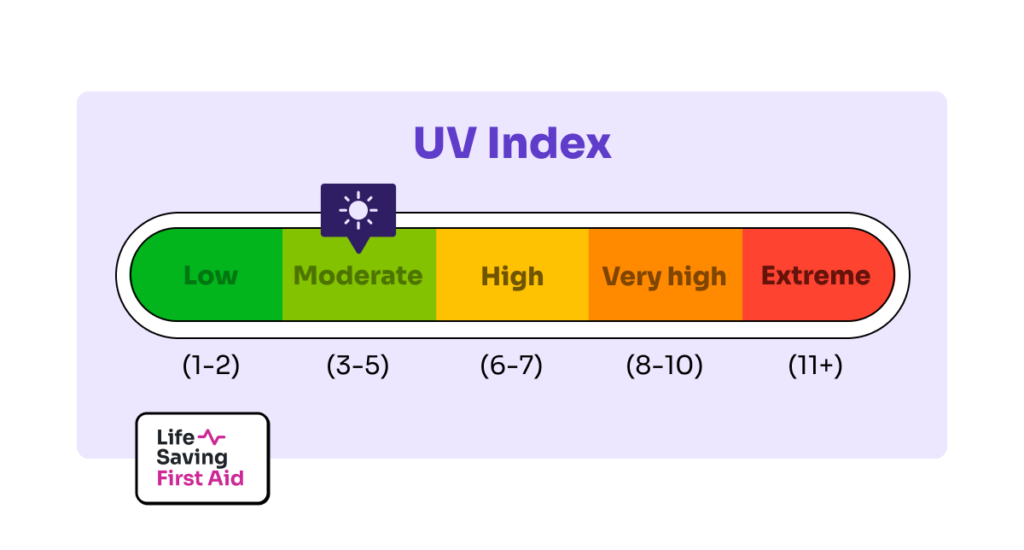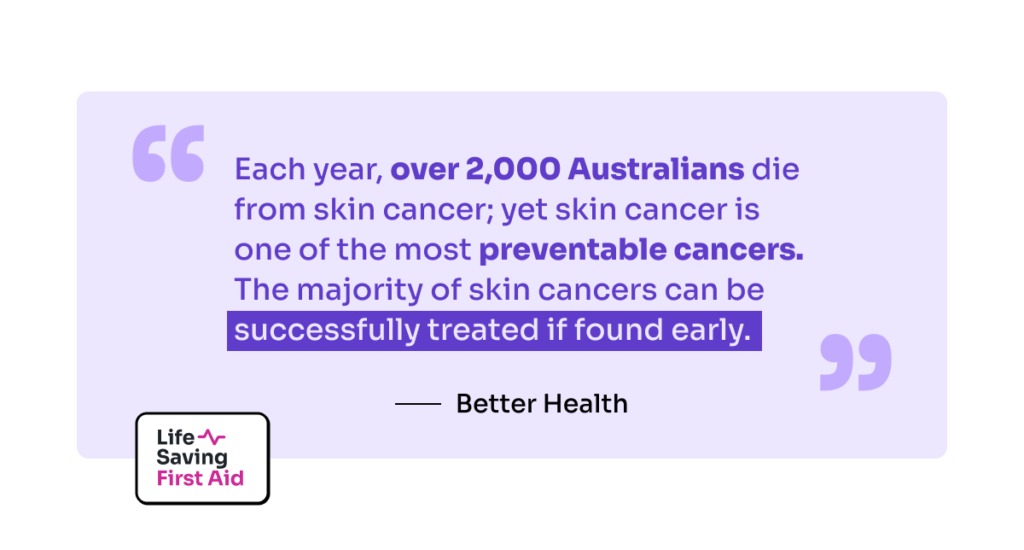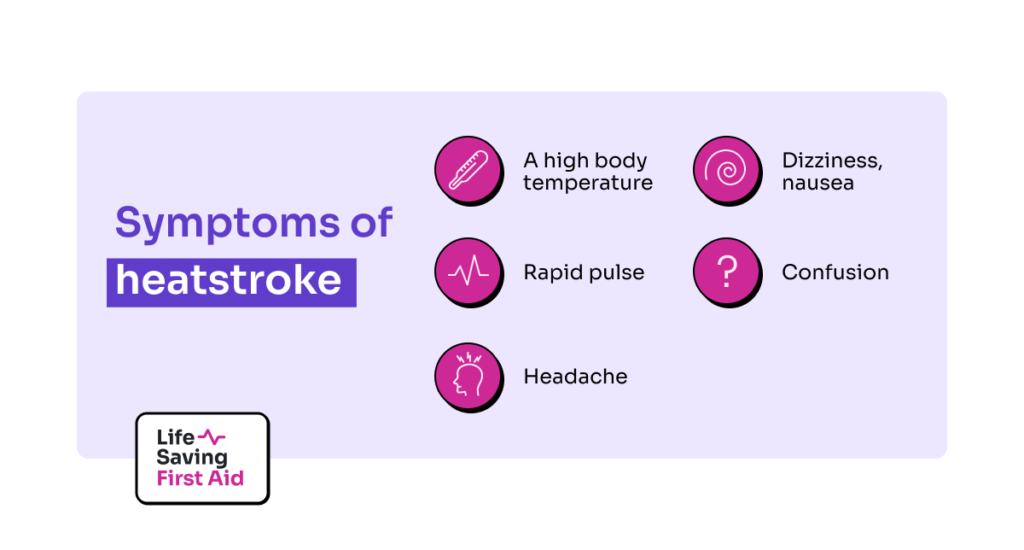Introduction
This island, Australia, is surrounded by oceans and seas, and there is no better way to beat the summer heat than going swimming in cool, refreshing water. But, as my good friend Publilius warns us, “Fear cannot restrain when pleasure invites.” Too often the pleasure of the swim will override any fear of the hazards, drowning risks, and danger.
According to the Royal Life Saving National Drowning Report 2022, 339 people drowned in Australian waterways from July 2021 to June 2022.
Around 21% of these drownings were at the beach.
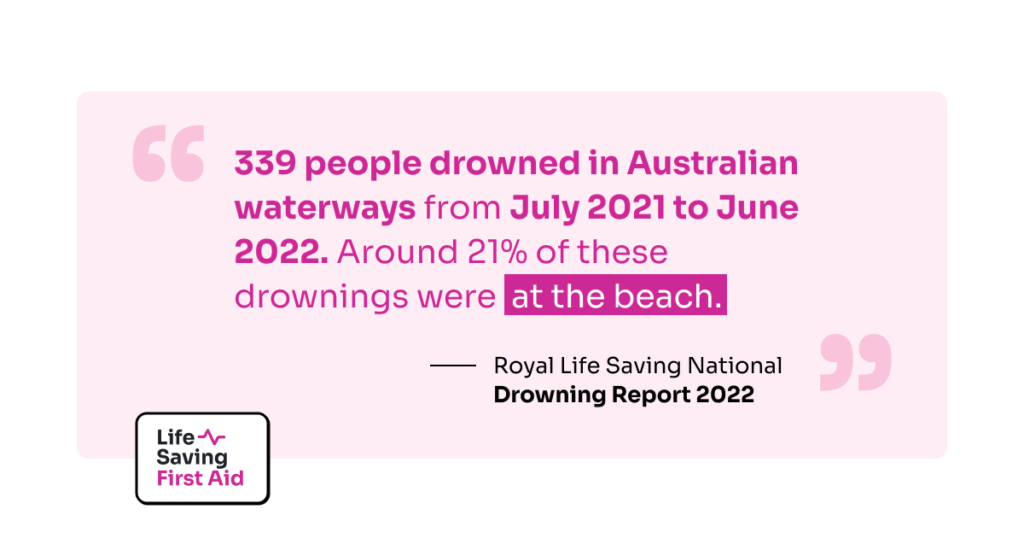
At the beach
How good is it when you find that remote stretch of beach with no one else in sight?
Gear off! ( if you’re game…), run down the beach and dive into the welcome relief.
Aaaahmazing!
There is a downside, however. When swimming in the ocean we need to be aware of the potential hazards, such as rip currents, undertows, and shallow water.
Rip currents can be dangerous and can pull swimmers out to sea, making it difficult to return to shore.
Diving into shallow water can result in head, neck, or spine injuries.
All of these expose you to the danger of drowning.
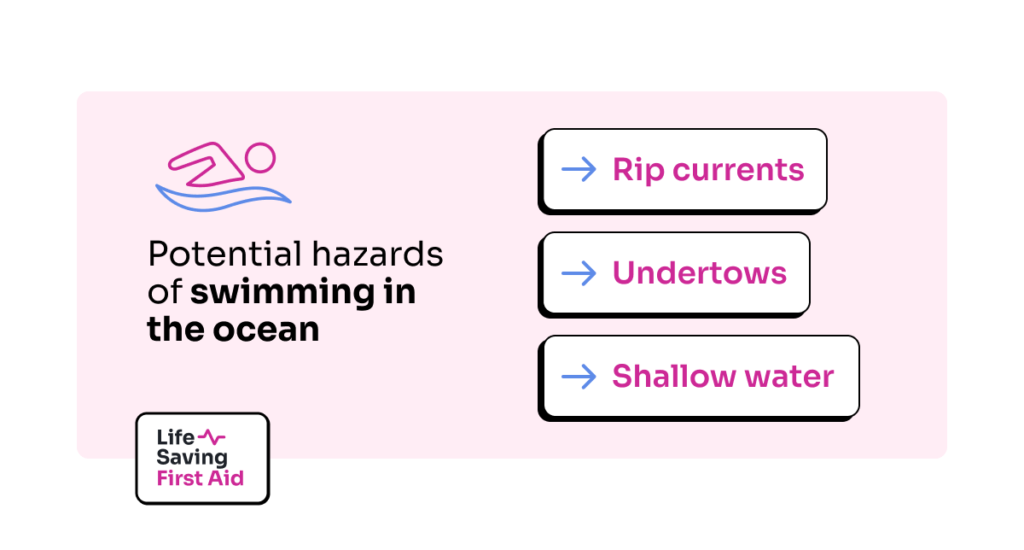
What is a Rip Current and how are they identified?
So… You’re on a remote beach. Alone. Being pulled out to sea by a rip current you had no clue was there… No one to help and no idea what to do.
This sure could ruin your day…
Understanding these ocean currents and how to recognise them will help you avoid them or, escape from their pull if caught in one.
A rip current is a narrow, fast-moving channel of water that flows away from the shore.
These currents can be difficult to spot, but they are often found near the beach in areas with breaking waves, such as near sandbars or jetties.
You should spend a few minutes studying the water before jumping in.
Look for:
- Dark-coloured water which looks deeper with less or no breaking waves.
- Brown water with foam on its surface out beyond the breaking waves.
- Rippled water with debris floating out to sea.
Sometimes it can be easier to look for where the waves are breaking consistently, and then look to each side where they don’t break consistently. Those areas are rip currents.
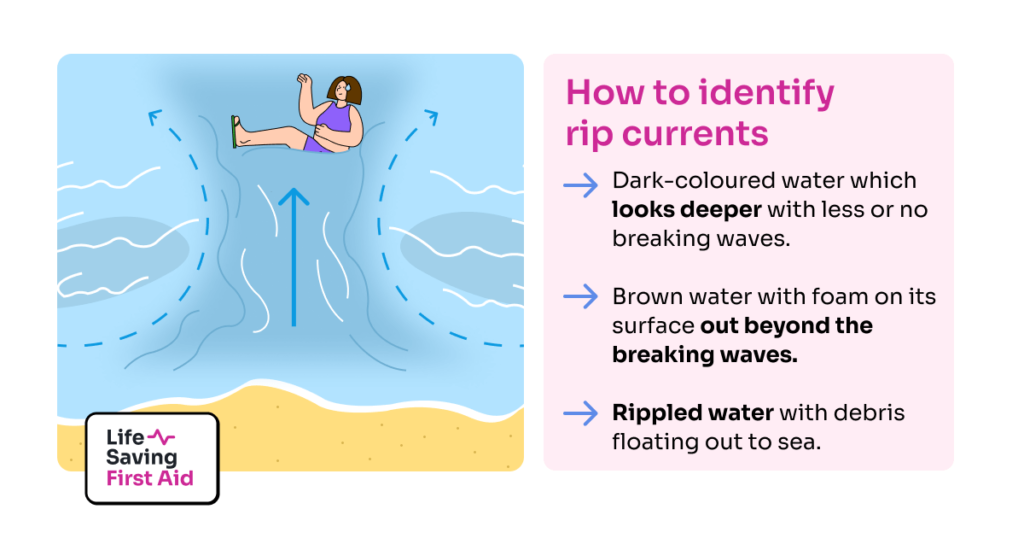
Caught in a rip? What should you do?
It’s important to stay calm, conserve your energy and not panic. If you panic you will be unable to
- think clearly,
and - control your actions.
This will reduce the danger of drowning.
Signal for help by raising one arm and calling out to attract attention.
Float on your back and float with the rip – it may carry you back to shore.
Wait to be rescued.
If you are a strong swimmer and not tired, try to swim parallel to the shore or towards the breaking waves to return to shore.
Never try to swim against the rip, you will only get tired and exhaust yourself.
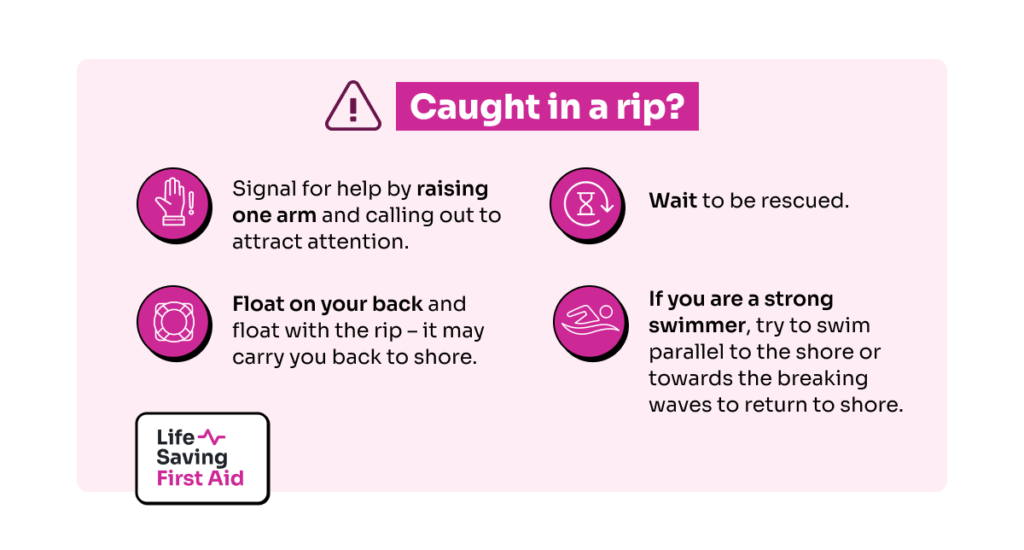
Avoid getting caught in a rip and reduce the danger of drowning.
The best way to avoid a rip is to swim on a patrolled beach, between the flags.
Look for flags or signs that indicate the presence of rip currents.
Avoid swimming near sandbars or jetties.
Undertows
Undertows are similar to rip currents, but they occur along the shore caused by large waves or swells. It will not pull you offshore into deep water.
Undertow is typically only dangerous for small children who can’t walk up the beach face against the strong backwash flow.
What makes them different, and more dangerous than a rip, is that these currents can pull swimmers under the water, making it difficult to surface for air.
To avoid getting caught in an undertow, swim on a patrolled beach between the flags, and avoid swimming in areas with large waves or swells.
If you can’t swim to safety, try to signal for help by waving your arms or shouting.
It’s also important to be aware of the ocean conditions such as the weather, the tide, and the waves. High tide, stormy weather or big waves can make swimming more dangerous. It’s always best to follow the advice of the lifeguards and to stay within the designated swimming areas.
Remember, do not swim alone.
A person who is caught by a rip, or undertow may become exhausted and unable to swim or keep themselves afloat any longer. There is a real danger they may drown.
If no one is watching….
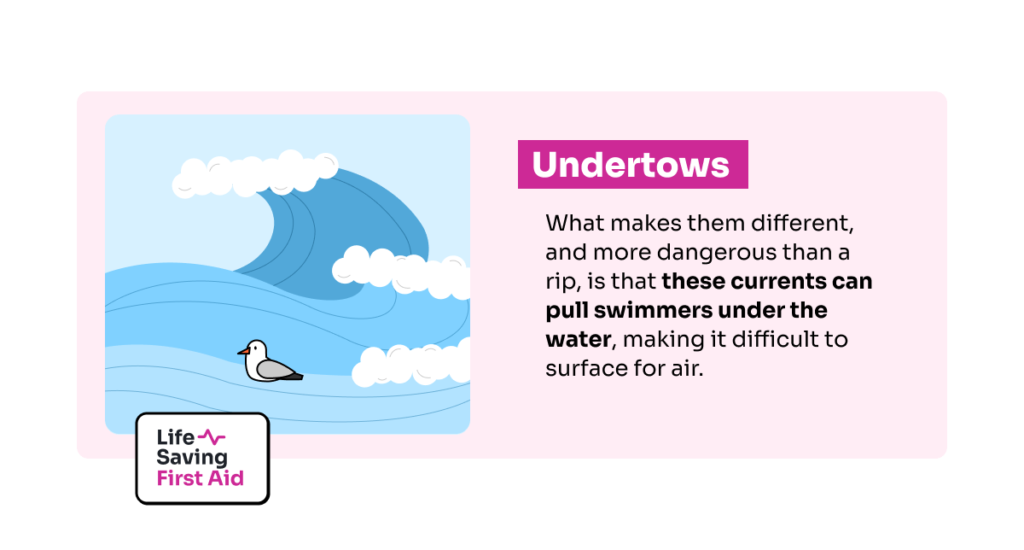
Shallow Water
There are a number of ways to sustain head or spinal cord injuries by diving into shallow water. The severity of the head injury or disability depends on the impact and or level of the spinal cord where the damage occurs.
Head injuries can occur when the head impacts rocks, the ocean floor, surfboards, or even other swimmers.
It is possible to damage the spinal cord by:
- Vertical compression – where the spine is compressed due to vertical impact with the ocean floor, or other objects, fracturing the spine and damaging the spinal cord.
- Hyperflexion – When the head contacts the ocean floor, and the neck is pushed forward beyond its limits. This can tear ligaments, and damage the spine and spinal cord.
- Hyperextension -These injuries may result from facial or frontal trauma, where the head and neck are forced backwards, damaging ligaments, the spine, and the spinal cord.
- Rotational injury – where the spine is twisted beyond its limits when the body is tossed around in turbulent shallow water. This can damage the spine and the spinal cord.
Here are a couple of things you can do to prevent head, neck, and spinal injuries at the beach:
- DO NOT DIVE into waves or water along the shoreline.
- Enter the water feet first.
- Swim between the flags on a patrolled beach.
A person who suffers a spinal injury in the water may not be able to swim, float or signal for help.
Once again, if no one is watching, the most likely outcome for them is drowning.
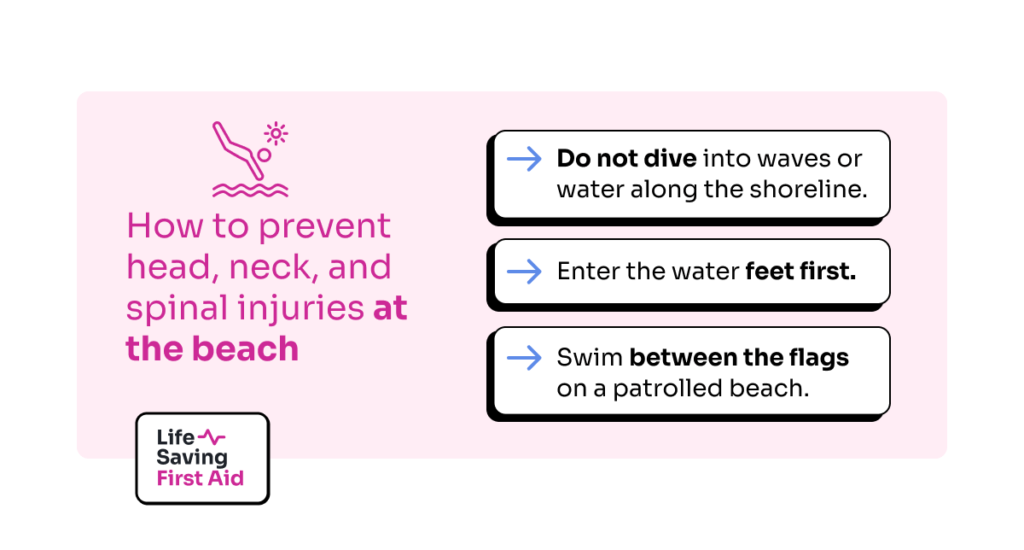
Drowning
If you suspect someone is drowning act quickly and, without putting yourself in danger, get them to safety as soon as possible.
Call for help, whether that’s by shouting for a lifeguard or dialling emergency services.
If the person is unconscious and not breathing, roll them onto their side and open their mouth to drain out any water.
Perform CPR. This can keep oxygen flowing to the brain and other vital organs, which can help to prevent permanent damage or death.
To perform CPR, you will need to:
- Position the person on their back on a firm surface,
- Perform 30 chest compressions. Pushing down one-third of their chest cavity to compress their heart.
- Tilt their head back slightly and pinch their nose shut
- Open their mouth and give two full breaths
Keep going until the person begins to breathe on their own, or until emergency medical services arrive
In summary

We live on an island and most, if not all of us love going to the beach. And we have plenty of beach. According to Geoscience Australia, Australia’s coastline stretches for approximately 34,000 kilometres. And around 50% of us live within seven kilometres of the coast.
Remember, never swim alone, always swim at a patrolled beach between the flags (AS IF! Yeah I know – But you should.) and be aware of the potential hazards such as rip currents, undertows, and shallow water.
If you suspect someone is drowning, it’s important to act quickly and get them to safety as soon as possible, call for help and perform CPR if necessary.
Well, that’s that. Until next time… Stay safe.
Adrian


